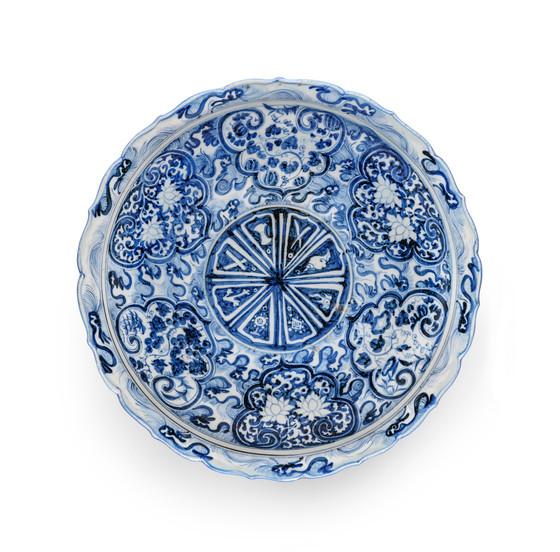Foliated Platter (Pan) with the Eight Buddhist Symbols (Bajixiang), Flowers, and Waves


Please log in to add this item to your gallery.
View comments
No comments have been posted yet.
Add a comment
Please log in to add comments.
Please log in to add tags.
* Nearly 20,000 images of artworks the museum believes to be in the public domain are available to download on this site.
Other images may be protected by copyright and other intellectual property rights.
By using any of these images you agree to LACMA's Terms of Use.
From the Collection: Foliated Platter with Eight Buddhist Symbols
February 10, 2015
With its foliated rim, unglazed base, and freely drawn wave motif, this plate from LACMA's collection is typical of early blue-and-white Yuan ceramics. The blue underglaze with white reserved areas emerged from innovative Yuan ceramic experiments. The platter hosts three additional concentric tiers of waves, which look as though they were spontaneously drawn. Six lobed cloud-collar patterns, seen on the largest plane of the plate, echo the gestures found on the rim. Within the six cloud patterns are illustrations of lotuses, abstract foliage, melons, grapes, bamboo, and morning glories...
Foliated Platter (Pan) with the Eight Buddhist Symbols (Bajixiang), Flowers, and Waves
China, Jiangxi Province, Jingdezhen, Yuan dynasty, circa 1340-1368
Furnishings; Serviceware
Molded porcelain with blue painted decoration under clear glaze
Height: 2 1/4 in. (5.9 cm); Diameter: 17 3/4 in. (45.1 cm)
Gift of the Francis E. Fowler, Jr., Foundation and the Los Angeles County Fund (55.40)
Not currently on public view


